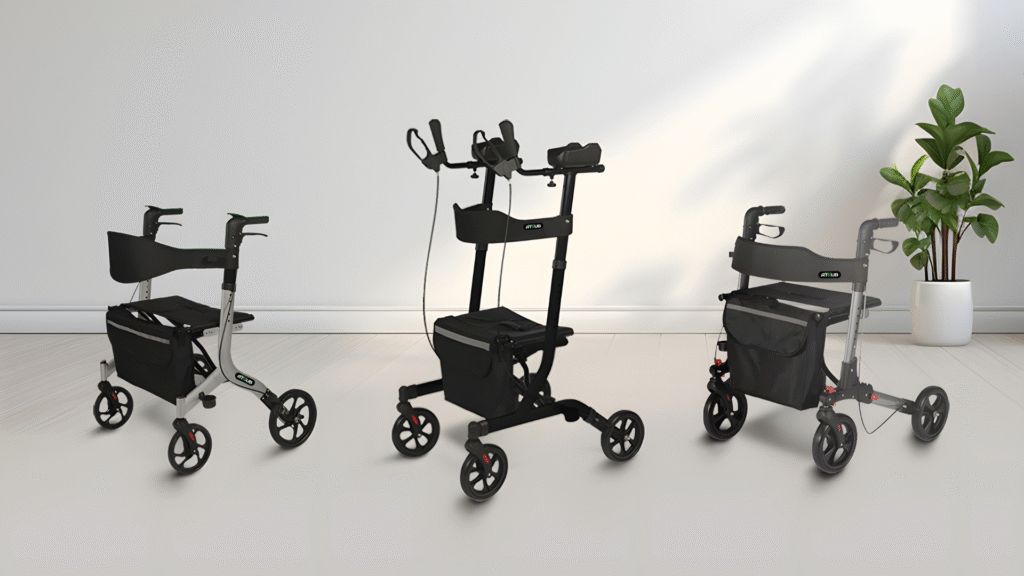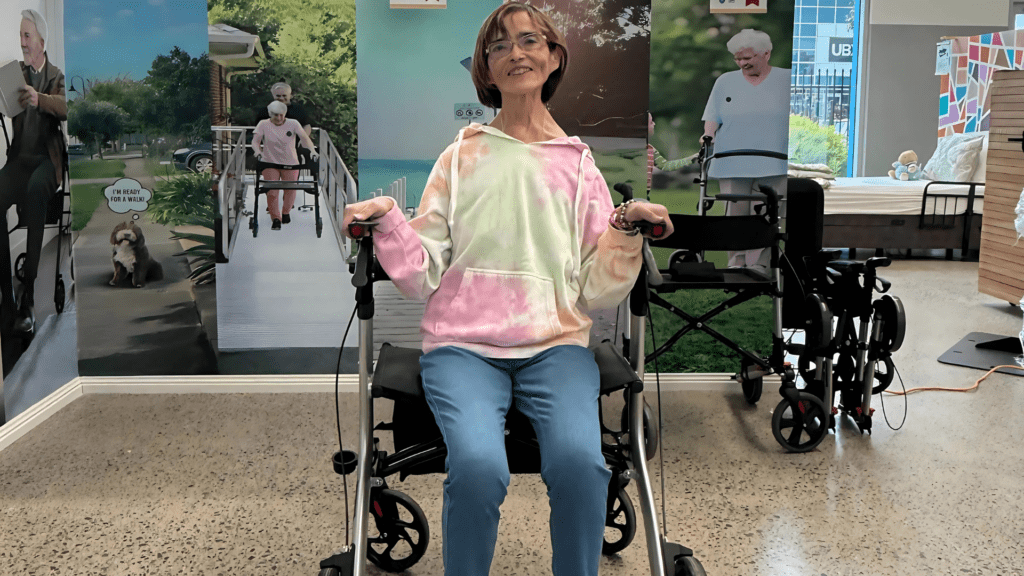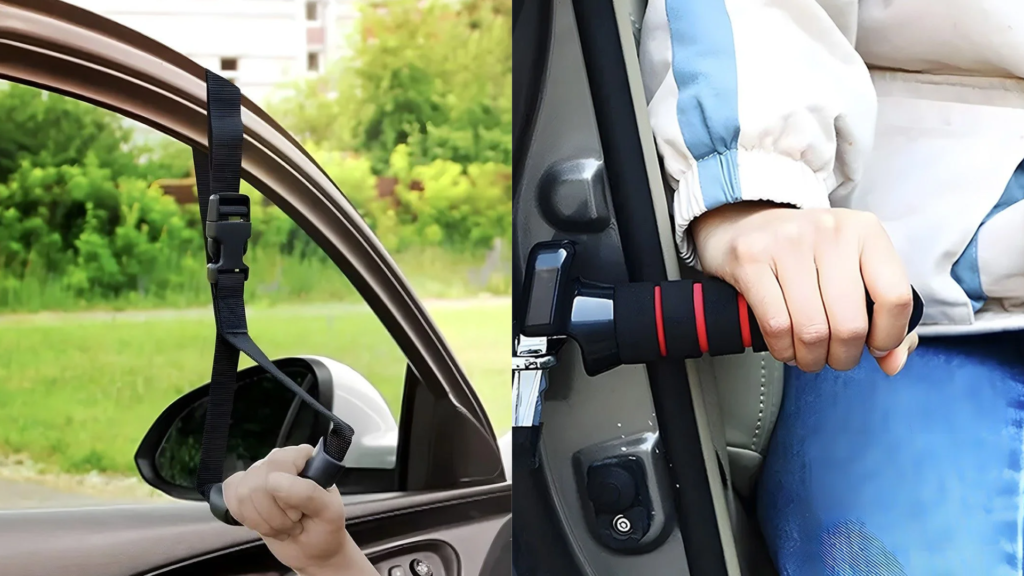Maintaining balance becomes more difficult with age, especially for seniors living with chronic conditions, muscle weakness, or recovery needs. The right walker can significantly reduce the risk of falls, increase confidence during daily movement, and help elderly individuals remain independent longer. In 2025, assistive technology for seniors is more advanced, ergonomic, and supportive than ever.
This guide outlines the best walkers for seniors with balance issues, highlighting key models, essential features, and available support through programs like the NDIS.
Understanding Balance Challenges in Seniors
Balance problems are common in older adults due to factors such as:
- Age-related muscle loss (sarcopenia)
- Poor vision or depth perception
- Neurological conditions like Parkinson’s or stroke
- Arthritis or joint instability
- Side effects from medication
These challenges often increase the risk of:
- Falls and related injuries
- Reduced mobility and physical activity
- Loss of independence
A walker designed for balance support can mitigate these risks and provide the physical and psychological support needed for safe movement.
What Makes a Walker Safe and Stable
Not all walkers offer the same level of balance support. For seniors with significant stability concerns, it’s crucial to look for features that improve posture, weight distribution, and grip.
Key Safety Features:
- Wide base of support for stability
- Ergonomic handgrips to reduce wrist strain
- Non-slip rubber wheels or feet
- Adjustable height to match the user’s frame
- Seat or backrest for rest breaks
- Brakes on handle grips for added control
- Lightweight but sturdy frame to prevent tipping
Explore the full range of walkers for seniors available at Care With Us.
Top Walker Models for Balance Support in 2025
Here are the best mobility walkers for seniors in 2025, designed to support balance, prevent falls, and increase safety during indoor and outdoor use.
- Extra-wide frame for maximum stability
- Padded seat and backrest for resting
- Reinforced structure supports higher weight capacity
- Suitable for larger or frail seniors
- Recommended by occupational therapists for users with severe balance issues
- Upright design encourages better posture and reduces strain on the back
- Forearm support bars improve stability and control
- Ideal for seniors with weak wrists or stooped posture
- Narrow turning radius for easy indoor use
- One of the top-rated walkers with stability features in 2025
Both models are NDIS-eligible and trial-ready for seniors across Victoria and Australia.
Key Features to Look For
When selecting a walker for an elderly person with balance problems, consider the following:
- Folding mechanism for easy transport and storage
- Padded seat and backrest for rest during long walks
- Height-adjustable handles to ensure proper alignment
- Front-wheel swivel for easier navigation
- Brake locks for safety on inclines or ramps
- Durable tyres for indoor and outdoor terrain
Ask your occupational therapist or support coordinator about the best fit for the senior’s physical needs and home layout.
NDIS Funding and Eligibility
The National Disability Insurance Scheme (NDIS) provides funding for assistive mobility walkers under the “Assistive Technology” category. Seniors who meet the following may be eligible:
Eligibility Criteria:
- Over 65 (if already an NDIS participant)
- Under 65 with a diagnosed disability or mobility impairment
- Assessed by an OT as requiring mobility support
- A goal in their NDIS plan related to daily independence or community access
What’s Covered:
- Walker equipment cost
- Home trials or OT assessments
- Delivery and setup
- Training for safe use
Need help starting the process? Submit a product enquiry or contact us for support with assessments and quotes.
Tips on Trial and Custom Fit
Proper fit is crucial for comfort and safety. A walker that’s too tall or too short can increase the risk of falls or joint strain.
Tips for Custom Fit:
- Ensure hand grips align with the user’s wrist when arms are relaxed
- Look for adjustable components to accommodate individual height
- Trial the walker on surfaces commonly used (tiles, carpet, outdoor paths)
- Test for easy manoeuvrability, especially in narrow hallways or small rooms
- Use an OT to recommend the correct size, features, and accessories
We offer home trials across Victoria to help seniors and families test walkers in their living environment before purchasing.
Conclusion
In 2025, seniors facing balance challenges have access to a wide range of walkers that are safe, supportive, and NDIS-compliant. Choosing the right one depends on individual needs, posture, home layout, and lifestyle goals.
- Explore our range of walkers for balance and fall prevention
- Submit a product enquiry to start your NDIS or private purchase process
- Speak to our team for guidance on OT trials, upright designs, or heavy-duty options
Investing in the right walker for seniors not only reduces the risk of injury but improves independence and peace of mind.
Frequently Asked Questions (FAQs)
What type of walker is best for seniors with balance issues?
Upright rollators or heavy-duty walkers with a wide base and ergonomic grips offer the best support for seniors with balance problems.
Can a senior use a walker both indoors and outdoors?
Yes, many modern walkers are designed for dual use. Look for non-slip wheels and a stable frame for safety across surfaces.
Are walkers for seniors covered by the NDIS?
Yes. If the individual is an eligible NDIS participant and the walker supports a plan goal, it can be funded under Assistive Technology.
How do I make sure the walker fits correctly?
Handle height should align with the user’s wrist when standing naturally. A trial or OT assessment is recommended to ensure the right fit.
Can I trial a walker before buying it?
Yes. At Care With Us, we offer walker trials for NDIS participants and private clients to ensure safety and satisfaction before purchase.



